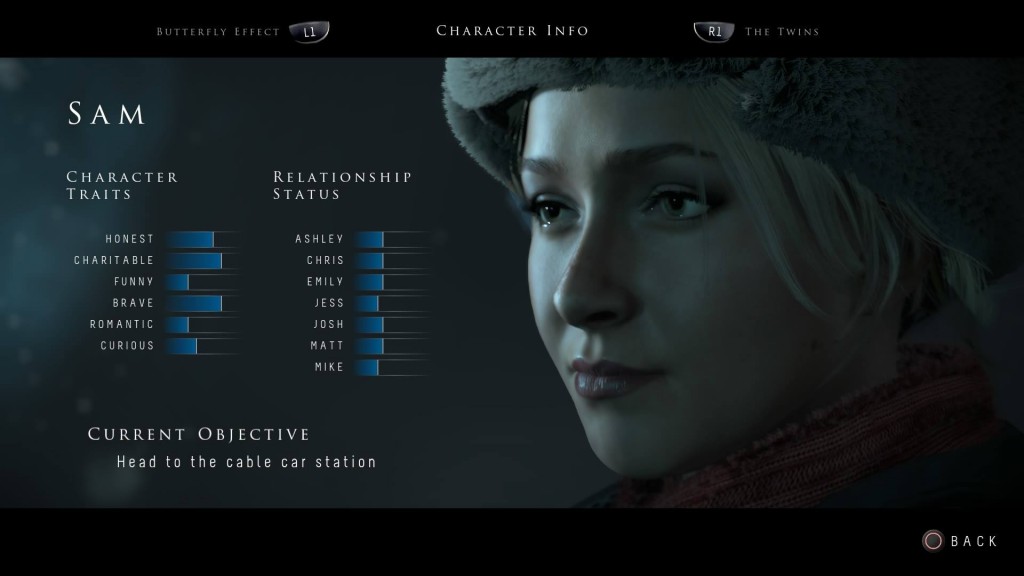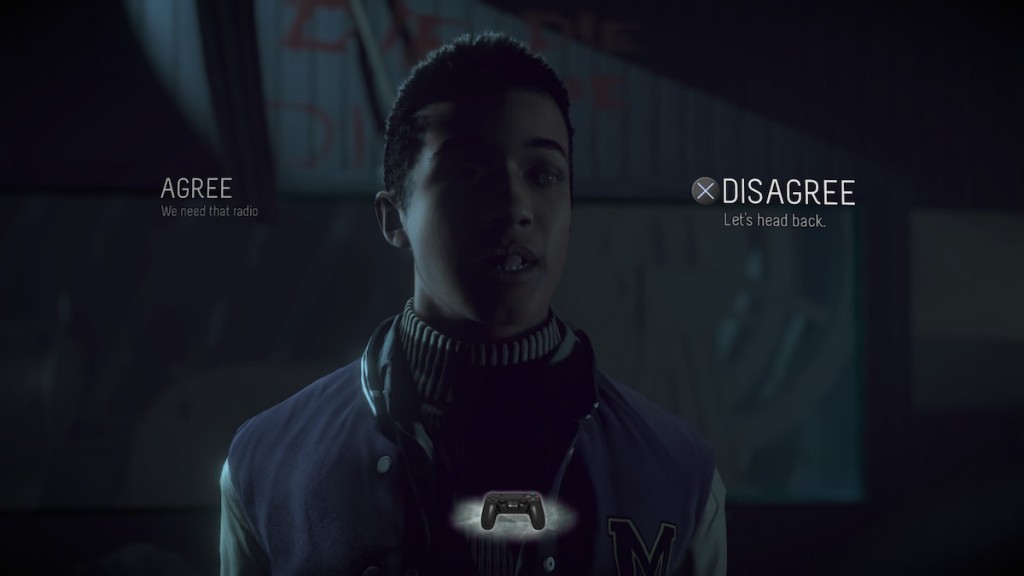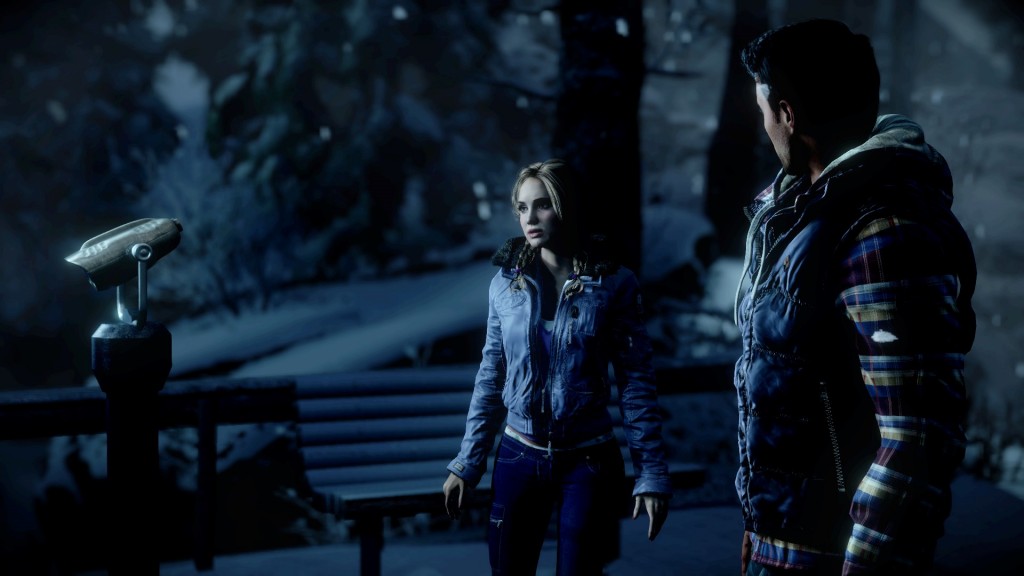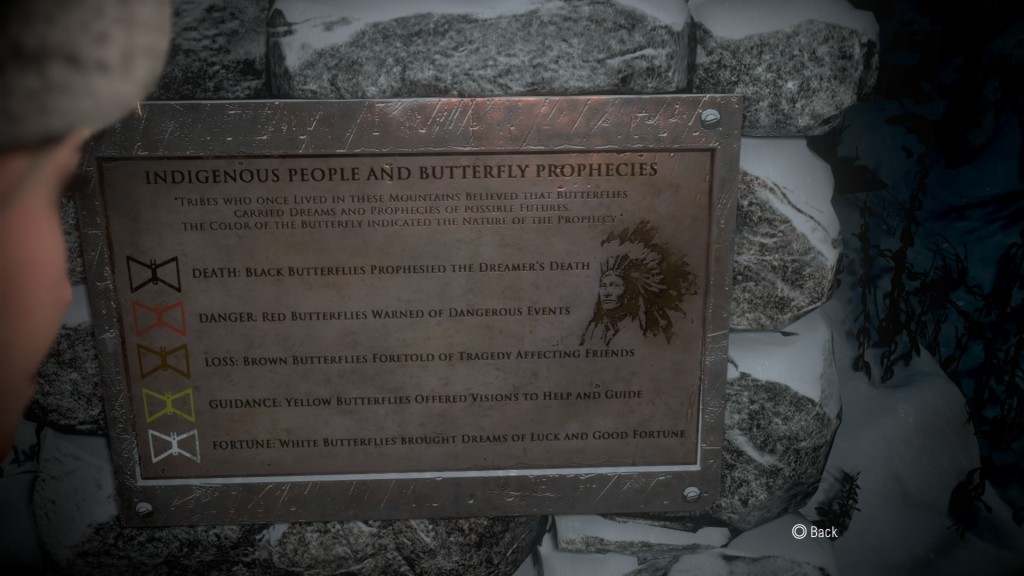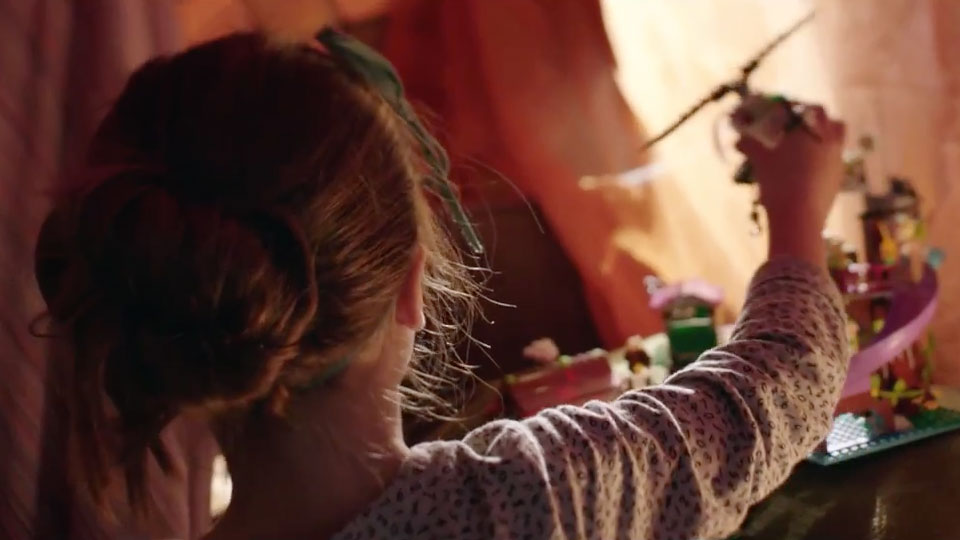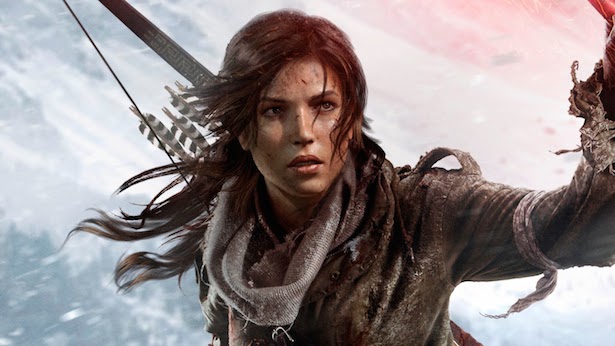It’s easy to condemn the characters in horror movies. After all, they make bad decisions: they split up and go their separate ways, they let personal conflicts get in the way of their better judgment and they put themselves in compromising situations, amongst a number of other things. With the exception of, perhaps, one or two characters, their survival instincts are generally fairly low. I’m sure that if you’ve ever watched a horror movie you’ve probably, like myself, proclaimed that you would be much wiser in such a life-or-death struggle. You wouldn’t put yourself in compromising situations. You wouldn’t leave the relative safety of the group. You would keep the group composed and mediate any conflict that arose between them quickly. You would do everything it takes to survive. But Until Dawn, a survival horror game developed by Supermassive Games and published by Sony, challenges you to stop passively experiencing horror material and instead put your survival instincts to the test. With even the smallest of your in-game choices actively affecting whether or not the characters you’re playing as survive, this unique horror title asks a simple question: can you survive until dawn?
Until Dawn’s premise will undoubtedly be a familiar one for even the occasional horror movie viewer. The game opens with ten presumably college-aged friends vacationing at three of the characters’ family’s cabin in the mountains of British Columbia. After playing a rather cruel prank on Hannah, who is seemingly the most socially outcast and awkward of the group, she flees, humiliated, into the dark woods. Concerned for her safety, Beth, her twin sister, runs after her, but the two disappear and never return. Exactly one year after their disappearance, Josh, their brother, invites their friends back to the cabin as a way to seek closure. It’s there that the eight friends realize that their getaway weekend is probably not the vice-filled vacation they were planning on.
While playing, I was almost taken aback by how much Until Dawn resembles an interactive version of a “B” horror movie. In addition to its slasher movie set-up, it’s easy to see how horror tropes have been used as foundations for Until Dawn’s characters. There’s Mike and Jess, the popular couple who just want to hook up with each other; Chris, the nerd; Sam, who has all the makings of the strong “last girl” type and so on. But this feels more like a tribute and homage to the genre than lazy storytelling and even going off of what little I’ve seen so far, every character has the opportunity to grow. More than this, you have a direct influence on which direction this growth takes. Rather than have you play as and control the actions of one specific character, Until Dawn tasks you with controlling every character, periodically rotating between them. During this time you are asked to make a variety of choices – some trivial (or at least seemingly so) and some that seem more identity-defining. Depending on the way you answer, the way other characters view said character may change. Unique to cinematic games, Until Dawn gives you a visual way to see and track this development in the form of a menu screen that shows a sliding scale of the currently playable character’s personality traits and how close they are to the other characters. This does take some of the mystery out of figuring out how two characters may interact, but it’s an interesting feature and I’ve enjoyed seeing how my choices have influenced the character and their relationships thus far.
Similar to cinematic, branching narrative games like Heavy Rain and Life is Strange, Until Dawn’s gameplay is fairly simple. It consists almost entirely of responding to in-game prompts and quick-time events, exploring, hunting down collectibles and some basic action items like aiming and throwing a snowball. Given the narrative and choice driven nature of the game, this style of gameplay fits naturally, although I imagine gamers who were left wanting in the action department by games like Heavy Rain or the The Walking Dead series will probably have some of the same concerns with Until Dawn. But the real fun of Until Dawn seems to lie in making these decisions and deciding which has the cast’s survival and best interests in mind. Although I’m not yet far enough to have seen any real consequences of my choices, it seems that even the most innocent decisions can swing the balance of whether or not a character lives or dies. It’s this factor that keeps me the most excited while playing: you’re never quite sure if the choice you just made will be what gets a character killed.
There are a variety of clues the game provides to seemingly help you make the right choices. Pictures, memos, newspaper clippings and the like all hold some insight into the nature of the mysterious killer and the events surrounding the death of Hannah and Beth. You can also periodically find totems along the way which, when gazed at, offer some insight into possible future events – be they good (like an indication on what path to take) or bad (a character’s death). It’s a unique idea, even if, more often than not, they make me paranoid and are too vague to really comprehend.
Visually and aesthetically, Until Dawn is gorgeous. I’ve found myself a couple of times thus far just stopping to appreciate the detail that went into the visual design of the game. The dark, wintery environments combined with an array of haunting and eerie noises add a great deal to the tension in the game. The game also has an opening theme song that arguably rivals the tracks found in Bastion or Bioshock Infinite (don’t worry, there’s no spoilers involved for those who are curious).
Until Dawn is not without its concerns, however. It relies heavily on jump scares, which, while I personally don’t have a problem with, could be too much for some. Although I’ve yet to encounter any substantial violence, I’ve heard there are some particularly gory and gruesome deaths, akin to something you’d see in the Saw movies, which may be a lot to handle. The characters are also almost annoyingly preoccupied with sex and hooking up which, while not necessarily problematic and consensual, I found a little much and overkill. These are fairly common staples in horror movies, however, so if you can normally handle those, Until Dawn’s content shouldn’t be a problem.
However my biggest concerns revolve around the way some of the female characters are depicted and the appropriative use of native imagery as well as stereotypical ideas of indigenous culture. While very few of the characters treat each other well in the game, I found the way some of the female characters treated each other to be particularly concerning. From the way Emily and Jess ganged up on Hannah to humiliate her to Emily and Jess’ catty fight, the hour or so I’ve played has been full of these sorts of moments. This isn’t to say that a situation like this couldn’t happen in real life, but the tension between Emily and Jess in particular, which is essentially centered on a feud over a man (Mike), feels unnecessary.
Finally, I’ve found the use of indigenous imagery and culture as “supernatural” or “scary” elements to be problematic. The items that a player can find that give clues to future events are totems and pieces of a larger totem pole. In the opening sequences, it is implied that an indigenous protestor has placed a curse on Hannah, Beth and Josh’s family for developing the land. At one point early in the game, you find a mine with a room with animal skulls and dream catchers all over the cave walls. Although unfortunately common in horror movies, it feels incredibly appropriative and inappropriate to use indigenous symbolism and culture to add an additional supernatural and scary element to the game.
Overall, if you enjoy horror movies and/or interactive, narrative-driven games, I would still recommend picking up Until Dawn. Despite the fact that it would probably make a mediocre horror movie, the ability to so heavily interact with and influence the course of the story keeps it exciting and compelling. It’s appealing in the same way its “B” horror movie companions are – corny, somewhat predictable, but still terrifyingly fun.

